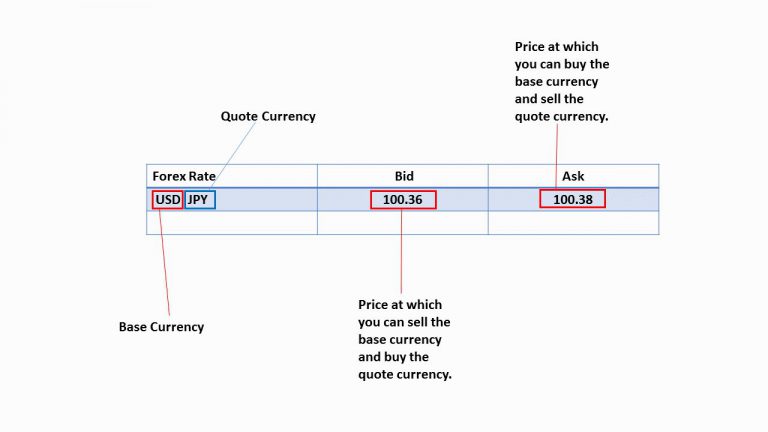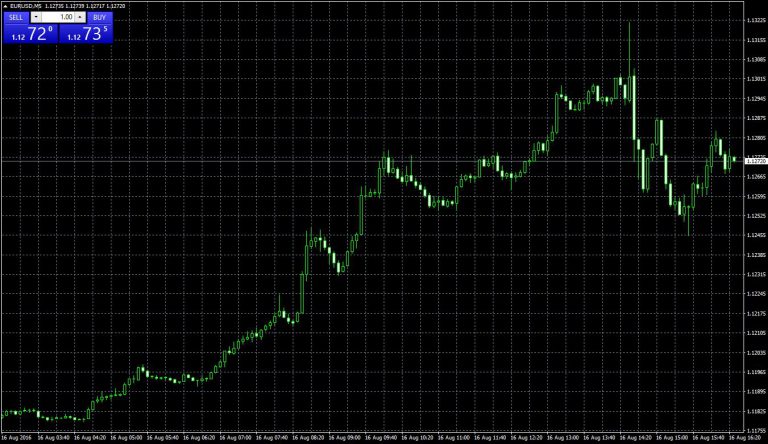Price quotations in foreign exchange or Forex trading are known as “Rates”.This phrase refers to the rate or price at which one can exchange or convert one currency for another. When we hear someone discussing the cable rate, they are not talking about their broadband speed, rather they are speaking about the relative values of the Great British Pound and the US dollar (which is usually shortened to GBP USD). At current Forex Rates (as of 22-08-16) the British Pound is worth around US$1.30. That is to say that it takes 1.30 US Dollars to buy one Pound Sterling. Or if you prefer a Pound Sterling will purchase one Dollar and 30 cents of the US currency.
Foreign Exchange Rates make the market
Forex Rates are quoted by the market making and trading divisions of commercial / investments banks, certain hedge funds and other large institutional investors and market participants. These prices or Forex Rates are disseminated electronically, via dealing screens across the globe, to form what is known as the Foreign Exchange market.
Massive turnover
The Forex Market is by far the world’s largest financial marketplace with a daily turnover that reaches as high as US $5 trillion. According to BIS (Bank for International Settlements) data. Once the sole preserve of professional money managers and institutional investors. The advent of the internet and online trading greatly democratised access to and extended the reach of the Forex Market.The rise of dedicated brokerages such as Blackwell Global and its peers,who offer margin Forex trading to their customers. Expedited this process to the point that today most experienced investors understand what we mean when we talk about Forex Rates.
Forex Rates reflect the ebb and flow of both investor and economic sentiment towards the two currencies quoted in the rate. They are also to a certain extent a measure of any interest rate differentials that exist between the two underlying economies whose currencies are being compared or valued in a given Forex Rate
Components of a Forex Rate
All Forex Rates are by their very nature comprised of two components, the two currencies whose conversion into the other the Forex Rate is expressing. These two currencies comprise the base currency, the first named currency and the quote currency, the second named currency. In which the Forex Rate is expressed.
For example if we look at the Forex Rate for US Dollars versus Japanese Yen we find might find the following rate.
The Forex rate is comprised of two prices. The Bid and Ask which together create the two way price common to every Forex Rate. These prices inform a trader about the levels at which they can (in this example) buy Dollars and sell Yen or sell Dollars and buy Yen. Depending on their views about which way the rate is likely to move in future.
Trying to predict changes in Forex Rates
Changes in Forex Rates occur frequently during trading hours and traders often use charts to keep track of where Forex Rates have been and to predict where they may be headed.
A five minute chart of the EUR USD (Euro US Dollar) Forex Rate
Charts such as the one above break the trading day, or week, down into discrete periods. In this case periods of five minutes of activity. The chart records the high and low rates during that period as well as the opening and closings rates for each five minute segment.This data is then displayed graphically on the chart,to provide a visual guide to the fluctuations in a given Forex Rate. The variation in these rates are known as price action.
The interpretation of charts their data and the patterns that they form is known as Technical Analysis. It’s one of two principal styles of analysis that are used by traders to try determine the future direction of Forex Rates. Followers of Technical Analysis believe that charts can contain all the information a trader needs to know and that prices, such as Forex rates, can and do form repetitive and predictable patterns that they can exploit.
The other principal method used to predict the movement and direction of Forex Rates is known as Fundamental Analysis. Followers of Fundamental Analysis study the underlying health of a country’s economy and financial situation. They then compare this data to that of its peers, to form a view about how they expect the respective Forex Rates to perform. Fundamental analysts look at large scale or macro data points such as unemployment rates, GDP growth rates and central bank policies to make their predictions. Paying careful attention to any deviations from market forecast for such macro data releases.
Traders use these and other tools to make judgements about how Forex Rates will move and back those judgements through a trade or position on given Forex Rates. Our free to download Blackwell Trader MT4 platform contains a high quality charting package and our clients can also access dedicated research from our team of Forex analysts. Furthermore they can practice trading and familiarise themselves with the way that Forex Rates move by opening a Forex Trading Account. Allowing them experience real trading conditions without risking their own cash.
DISCLAIMER
This information is not considered as investment advice or investment recommendation for a purchase or sale of any foreign currency, CFD, precious metals or any other products offered by Blackwell Global. The information and opinions presented do not take into account any particular individual’s investment objectives, financial situation, or needs, and hence does not constitute as an advice or a recommendation with respect to any investment product. All investors should seek advice from certified financial advisors based on their unique situation before making any investment decisions and should tailor the trade size and leverage of their trading to their personal risk appetite.



